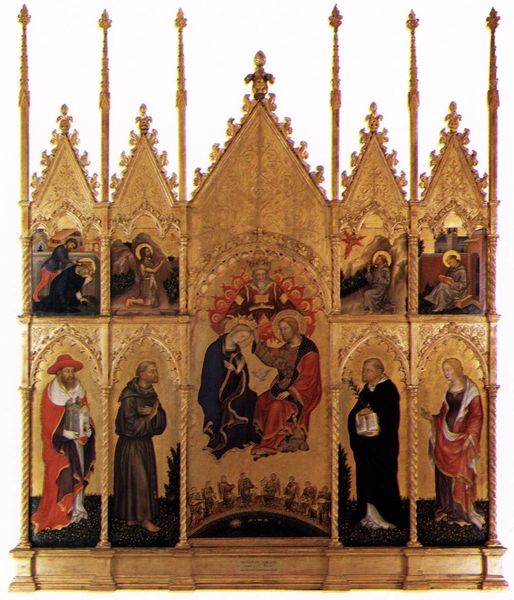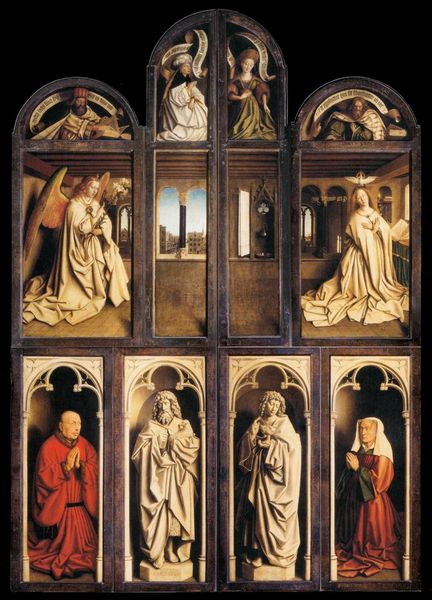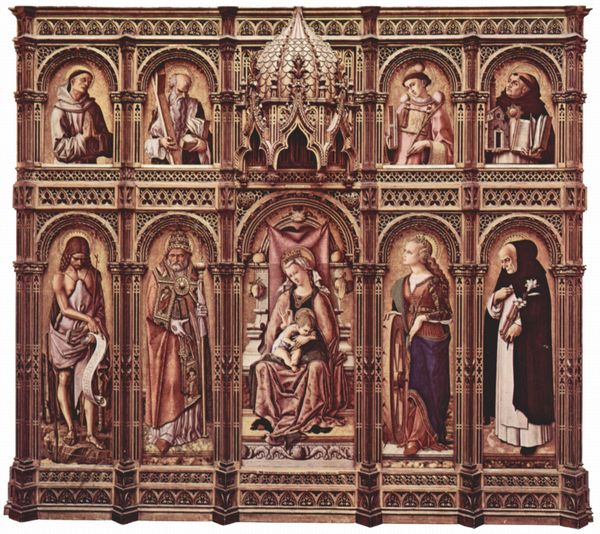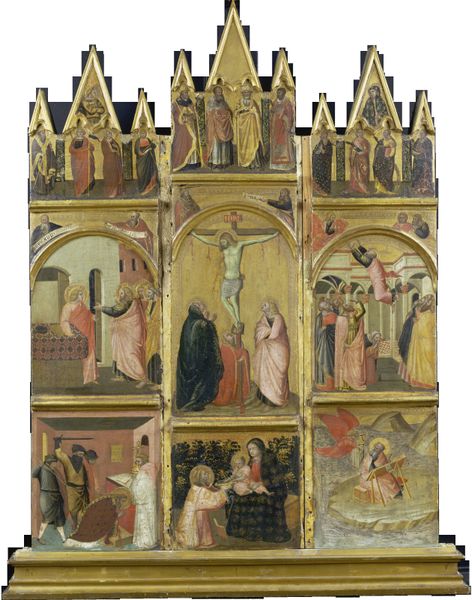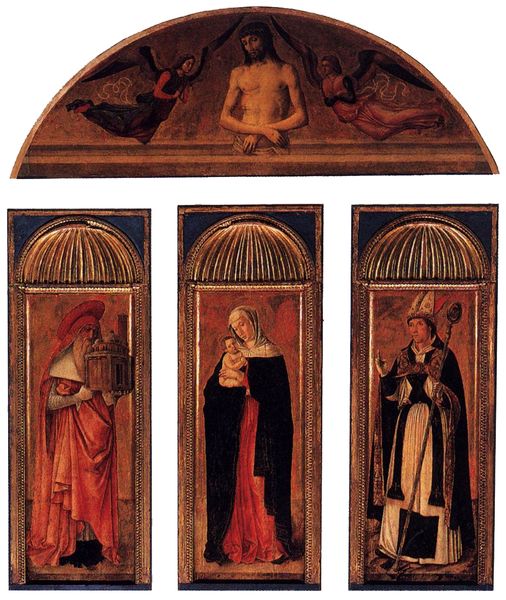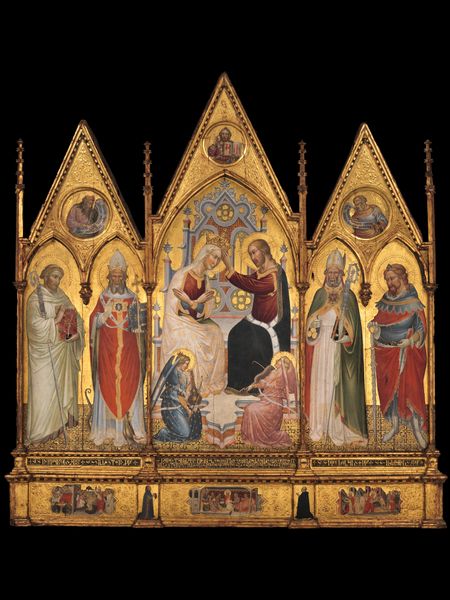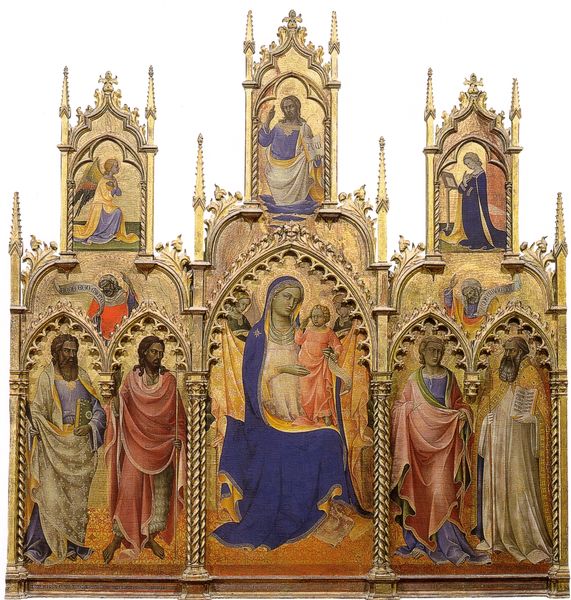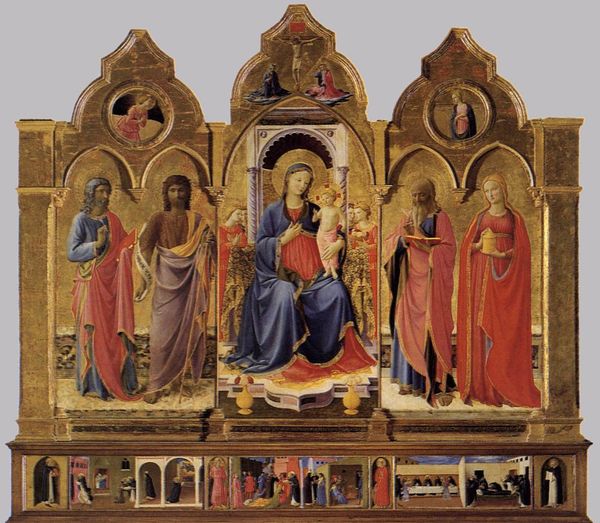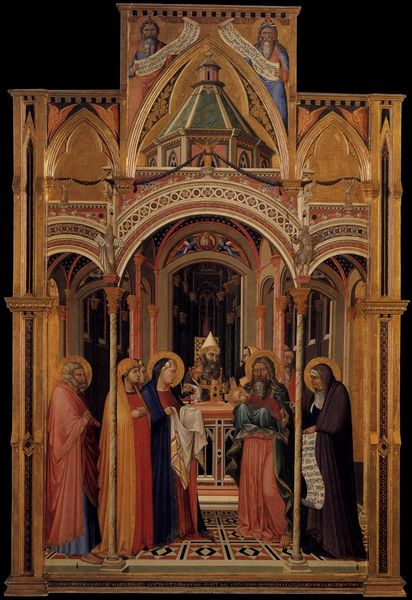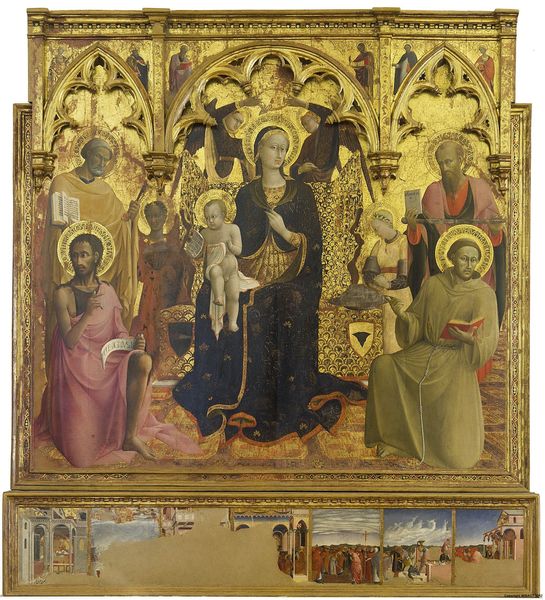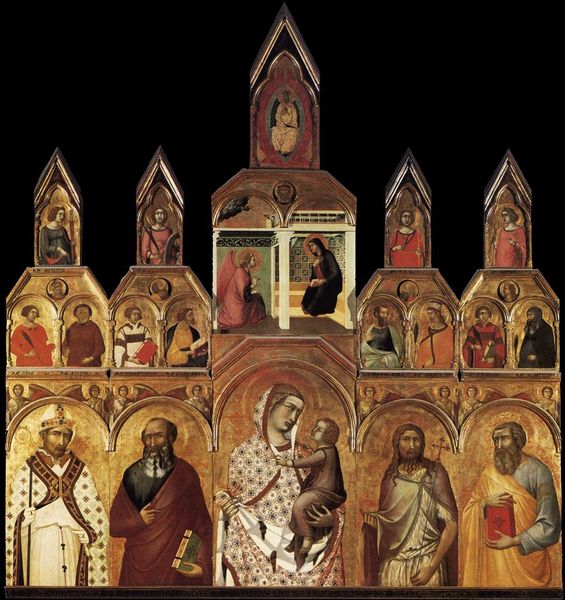
tempera, painting
#
portrait
#
medieval
#
narrative-art
#
tempera
#
painting
#
sculpture
#
gothic
#
holy-places
#
sculptural image
#
figuration
#
traditional architecture
#
history-painting
#
academic-art
#
italian-renaissance
#
miniature
#
historical building
#
statue
Copyright: Public domain
Curator: Immediately, I’m struck by how intricately the gold leaf is applied here. It feels incredibly lavish. Editor: And with good reason. What you’re admiring is Giovanni da Milano’s "Polyptych with Madonna and Saints," painted around 1355, made with tempera. Notice the organization; it's a composite structure, almost like an altarpiece predella, a series of narratives and iconic portraits. Curator: You're right, it's the craftsmanship of that framework that really catches my attention. Each panel has its own intricate design, almost modular, how would they have done it? Editor: It does make you wonder about the process. Beyond the assembly and craftsmanship, I find myself contemplating the figures themselves. The Madonna at the center feels like the sun around which these saints and narratives orbit. Curator: They're static but full of detail, as if pausing during a very important moment to be looked at in all its magnificence. Take the clothing: these aren't just clothes, but signifiers of identity and status, painstakingly rendered in pigment and gold. What was the relationship between artist, patron, and workshop? Editor: Undoubtedly one where these symbols spoke loudly. The narrative panels, so delicately painted, provide a context for devotion and meditation. They represent specific moments, frozen in time and loaded with religious significance, especially around sacrifice and worship. Curator: Right, that miniature crucifixion panel at the center. Its placement in the lower tier anchors the whole composition, pulling together a range of social classes, and devotion as well. Each scene would require individual dyes and labor; think about the social implications! Editor: Precisely! The materials and workmanship themselves become embodiments of value. Even the scale is significant. Its verticality draws the eye upward, mimicking a sense of transcendence. It’s as if each material carries with it a fragment of the divine, echoing in the architectural structure. Curator: I suppose analyzing all of that really highlights the complex web of economics and faith in the 14th century. Who commissioned something like this speaks volumes about both the market of devotionals but also the socio-economic state. Editor: Indeed. Looking at this polyptych through both lenses offers a richer appreciation for not just the visual language of the Middle Ages but also its very foundations.
Comments
No comments
Be the first to comment and join the conversation on the ultimate creative platform.

